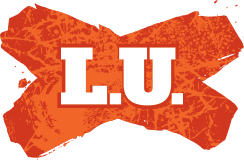Headshots from 600 metres involve the theory of small arms fire, breathing and, a myriad of other factors. The moral of the story is school will make you a better assassin.f**k uni, I am going to go train to be an assassin.
Obviously not directed at me. (id say i was in the Army before you were born) or close to it.I finished school, before you were even born.
Even if that were true you still could not have finished school before I was bornI'm 53-years-old.

Ah how silly of me you are one of those advanced learning babies yes?I finished school, when I was still in utero.
This unit is based on scientific principles and practices of strength and conditioning. It provides students with a fundamental framework to design, implement and coach resistance training, whilst operating within an ethical framework. Practical experience of resistance training is embedded within this unit. A range of methodologies will be presented and specifically how they can be integrated within a persons lifestyle to achieve a training goal or outcome will be examined. A particular focus of this unit will be the use of resistance training that can be applied to different populations across the lifespan.
This unit provides an introduction to anatomical terminology, and structural neuromusculoskeletal anatomy as a foundation of Exercise Science. It includes surface, gross, systemic, regional and developmental neuromusculoskeletal anatomy, foundational for understanding exercise, body mechanics, growth, skill development, movement patterns, and implications for health.
This unit introduces biomechanical concepts applicable to the study of exercise and sports science, focusing upon external forces and their effects on the body and its movement. Biomechanics includes the study of kinematics and kinetics. Kinematics is the description of motion and encompasses concepts such as displacement, velocity and acceleration of rigid and biological systems. Kinetics provides an explanation of the cause of motion due to the effects of forces and includes concepts such as force, inertia, stability, momentum, work and power. Laboratory classes introduce students to the applications of biomechanics for the physical educator, coach and exercise or sports scientist.
This unit involves 150 hours of focused learning. A range of learning and teaching strategies appropriate to the campus and mode of delivery and its interdisciplinary and team teaching methodology will be utilised. The unit will be offered in blended, intensive and fully online modes, and through an approved overseas experience equivalent to 3 hrs per week for 12 weeks.
This unit explores the elements of life that contribute to human thriving in community and the vulnerability that is part of the human condition. It focuses on interdependence and social justice as building blocks of dynamic communities, local, regional and global. The unit engages with a fundamental commitment to social justice and advocacy on behalf of the vulnerable, both with the Catholic intellectual tradition and from other sources.
